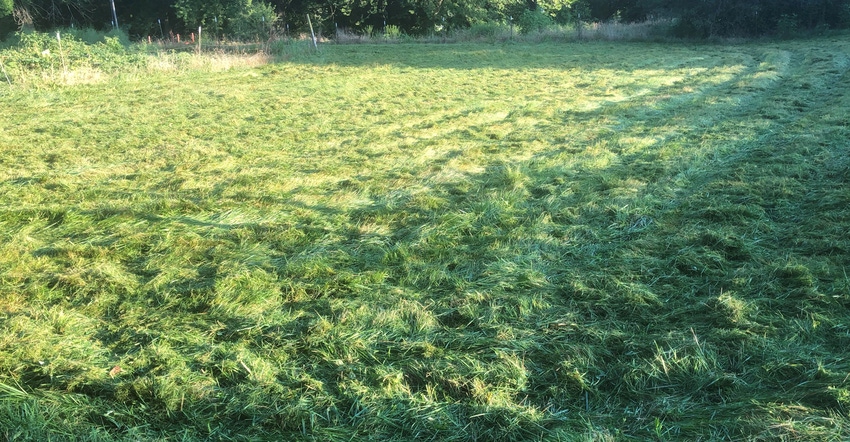August 26, 2021

When it comes to grazing, there are four never-fail rules:
1. Never let seed heads form. The immature stage is early, when forages are high in moisture and usually nitrogen. Next is the vegetative stage, with some plants in the boot stage. Finally, is a maturing stage, where seed is produced. Ideally, keep forages in that second stage as long as possible. Nutrition is good, bite size is good, and the plant continues growing leaves. Once seed heads form, energy shifts to seed production.
Rotate livestock regularly and provide adequate rest to a pasture before grazing again. Allocating smaller amounts helps provide more even grazing and less patch grazing and avoidance. Grazing helps delay seed head production. A timely clipping slows down seed head production.
There are situations when letting a field sit idle and mature is good. This allows sufficient time for plants to fully express themselves and allows for maximum root depth. Strip-grazing lets livestock eat the best and lay down the rest.
2. Never let livestock graze more than seven continuous days on a pasture. When animals are left too long on a pasture, they will stop grazing existing vegetation and move to regrowth from what was just grazed. Forage needs rest before being grazed off again. Forage livestock avoid tends to get ranker and avoided even more. Longer grazing periods result in more spots overgrazed and undergrazed. More undesirable species appear, too.
3. Never graze closer than 3 inches. “Stop-grazing” heights are the shortest forages present. Maintain a certain amount of leaf growth to keep the “solar panel” in good working condition. Plants support their root system better, keep the ground covered better, keep the soil cooler and usually help support more regrowth. Stop-grazing height is the amount of residual live plant material left behind after grazing. If some forage has been grazed to 1.5 inches, that is the residual height and, in most cases, it’s considered overgrazed.
Short cool-season forages such as Kentucky bluegrass and white clover are more tolerant to closer grazing. Most tall cool-season forages such as orchardgrass and tall fescue are best kept to at least 4 inches. Warm-season forages such as big bluestem, indiangrass and switchgrass need a minimum of 6 inches but do better with 8 to 10 inches. The exception is postdormancy early winter. Forages will tolerate a closer grazing then, and that opens an opportunity to improve conditions for frost-seeding clover midwinter.
4. Never return to a pasture in fewer than 30 days. That time frame is usually enough under normal conditions to get adequate regrowth to be able to graze again. Quite often during the spring rapid growth period, that is too long. Keep rotating pastures in the spring until that first paddock is ready to be grazed again, and then start over. Otherwise, more fields will potentially get out of control, and rule No. 1 goes out the window.
Later, when things get hotter and drier, the rest period is usually closer to 45 to 50 days. Reassess forages on a regular basis and move according to the amount of forage present. Remember, it’s not about maximizing a grazing event, but maximizing a grazing season. Keep on grazing!
Shelton is a state grazing specialist with the Natural Resources Conservation Service in Indiana.
You May Also Like




